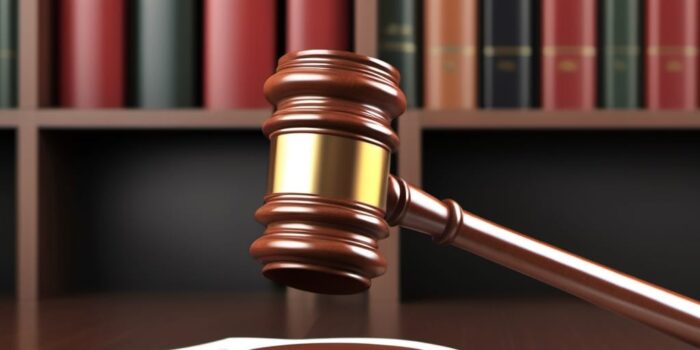In the realm of law, the term ‘pleading’ carries a significant weight and meaning. It refers to a formal written statement filed with a court by parties in a civil action, other than a motion. By definition, a pleading states, in a concise and direct manner, the claims and defenses of the parties involved in the legal proceedings. This article delves into the intricacies of pleading, its types, importance, and how it functions within the legal framework.
Understanding the concept of pleading is crucial for anyone involved in legal proceedings, as it sets the stage for the lawsuit. It is the initial step in a civil lawsuit where the plaintiff makes a legal claim that the defendant must then respond to. This article provides a comprehensive overview of pleading, aiming to shed light on its various aspects and nuances.
Origins and Evolution of Pleading
The concept of pleading has a long and storied history, tracing back to the early days of common law. Originally, pleadings were oral and took place in public, often in the form of a verbal duel between the plaintiff and the defendant. Over time, as legal systems evolved and became more complex, pleadings transitioned from oral arguments to written documents, providing a clear and concise summary of claims and defenses.
Today, pleadings have become an integral part of the legal process, serving as the foundation upon which a lawsuit is built. They provide a roadmap for the litigation process, outlining the issues in dispute and guiding the court in its decision-making process. The evolution of pleading reflects the broader evolution of legal systems towards greater clarity, precision, and efficiency.
Common Law Pleading
Common law pleading was a system of pleading that was used in England from the 13th century until it was abolished in 1873. It was characterized by its strict and technical rules, which often prioritized form over substance. The main purpose of common law pleading was to narrow down the issues in dispute, and it did so through a series of pleadings, each one responding to the one before it.
Despite its eventual abolition, common law pleading has left a lasting impact on the legal system. Many of its principles and concepts, such as the idea of precedent and the importance of procedure, continue to influence modern legal practice.
Modern Pleading
Modern pleading, also known as notice pleading, is the system of pleading currently used in most jurisdictions. It is characterized by its simplicity and flexibility, with a focus on substance over form. Unlike common law pleading, which required a specific form of action, modern pleading allows parties to make their claims in any form that provides the opposing party with sufficient notice of the claim.
The shift to modern pleading was driven by a desire to make the legal process more accessible and efficient. By simplifying the rules of pleading, the legal system has been able to focus more on the merits of the case, rather than technicalities.
Types of Pleadings
Pleadings can take various forms, each serving a specific purpose within the legal process. The two most common types of pleadings are the complaint (or petition) filed by the plaintiff, and the answer filed by the defendant. However, there are also other types of pleadings, such as the reply, the counterclaim, and the cross-claim, each of which plays a unique role in the litigation process.
Understanding the different types of pleadings is crucial for navigating the legal process. Each type of pleading serves a specific function and follows a particular set of rules, and knowing how to use them effectively can greatly impact the outcome of a case.
Complaint
The complaint, also known as a petition, is the first pleading filed in a lawsuit. It is the document that initiates the legal proceedings, outlining the plaintiff’s claims against the defendant. The complaint must provide a short and plain statement of the claim, showing that the plaintiff is entitled to relief, and a demand for the relief sought.
The purpose of the complaint is to provide the defendant with notice of the claims against them, allowing them to prepare a defense. It also serves to inform the court of the nature of the dispute, providing a basis for the court’s jurisdiction.
Answer
The answer is the pleading filed by the defendant in response to the plaintiff’s complaint. It addresses each allegation made in the complaint, either admitting, denying, or claiming insufficient knowledge to admit or deny each allegation. The answer may also include defenses to the plaintiff’s claims and any counterclaims the defendant may have against the plaintiff.
The purpose of the answer is to narrow down the issues in dispute and to provide the court with the defendant’s perspective on the case. It is a crucial part of the litigation process, as it sets the stage for the rest of the case.
Importance of Pleading
Pleading plays a crucial role in the legal process, serving several important functions. First and foremost, it provides a framework for the litigation process, outlining the claims and defenses of the parties and setting the boundaries of the dispute. This helps to focus the litigation on the issues in dispute, making the process more efficient.
Second, pleading provides notice to the parties of the claims and defenses being asserted, allowing them to prepare their case. This is a fundamental aspect of procedural fairness, ensuring that no party is taken by surprise. Finally, pleading provides a record of the proceedings, which can be crucial for appeal or for future reference.
Framework for Litigation
Pleadings serve as the blueprint for a lawsuit, outlining the claims and defenses of the parties and setting the boundaries of the dispute. This helps to focus the litigation on the issues in dispute, making the process more efficient. Without pleadings, a lawsuit would be like a ship without a rudder, aimlessly drifting without a clear direction.
By setting out the claims and defenses in a clear and concise manner, pleadings allow the parties and the court to identify the issues in dispute and to prepare for trial. This helps to streamline the litigation process, reducing unnecessary disputes and delays.
Notice to Parties
One of the fundamental principles of procedural fairness is that no party should be taken by surprise. Pleadings serve this principle by providing notice to the parties of the claims and defenses being asserted. This allows the parties to prepare their case and to respond to the allegations made against them.
Without pleadings, a party could be blindsided by a claim or defense that they were not expecting. This could result in unfairness, as the party would not have had the opportunity to prepare a response. By providing notice, pleadings ensure that all parties have a fair opportunity to present their case.
Rules Governing Pleadings
The rules governing pleadings vary from jurisdiction to jurisdiction, but there are some common principles that apply. Generally, pleadings must be concise and direct, stating the facts on which the party relies for their claim or defense. They must also be signed by the party or their attorney, and must be filed with the court.
Failure to comply with the rules governing pleadings can result in sanctions, including the dismissal of the claim or defense. Therefore, it is crucial for parties to understand and follow these rules when drafting and filing their pleadings.
Conciseness and Directness
One of the fundamental principles of pleading is that it must be concise and direct. This means that the pleading should state the facts on which the party relies for their claim or defense, without unnecessary detail or repetition. The purpose of this rule is to ensure that the pleading provides a clear and concise summary of the case, allowing the other party and the court to understand the issues in dispute.
While it is important for a pleading to be concise, it must also be complete. This means that it must include all the facts necessary to support the claim or defense. If a pleading is too vague or incomplete, it may fail to provide sufficient notice to the other party, resulting in unfairness.
Signature and Filing
Another important rule governing pleadings is that they must be signed by the party or their attorney. The signature serves as a certification that the pleading is made in good faith, that the allegations are supported by evidence, and that the pleading is not being used for an improper purpose, such as to harass or delay the other party.
Once a pleading is signed, it must be filed with the court. This is usually done by delivering the pleading to the court clerk, who will stamp it with the date and time of filing. Once a pleading is filed, it becomes part of the court record and can be used as evidence in the case.
Conclusion
In conclusion, pleading is a fundamental aspect of the legal process, serving as the foundation upon which a lawsuit is built. It provides a framework for the litigation process, provides notice to the parties, and creates a record of the proceedings. Understanding the concept of pleading, its history, types, importance, and rules is crucial for anyone involved in legal proceedings.
While the rules and procedures surrounding pleading can be complex, they serve a crucial role in ensuring fairness and efficiency in the legal process. By providing a clear and concise summary of the claims and defenses, pleadings allow the parties and the court to focus on the issues in dispute, making the process more efficient and just.
Start Your Legal Journey with Clear Legal
Understanding the complexities of pleadings is just the beginning. At Clear Legal, we’re committed to guiding you through the legal maze with our core values of ethics, innovation, and quality. If you’re seeking clarity and a partner that upholds the highest standards in legal proceedings, we invite you to request a free consultation today. Let us help you navigate your legal challenges with the expertise and integrity you deserve.





